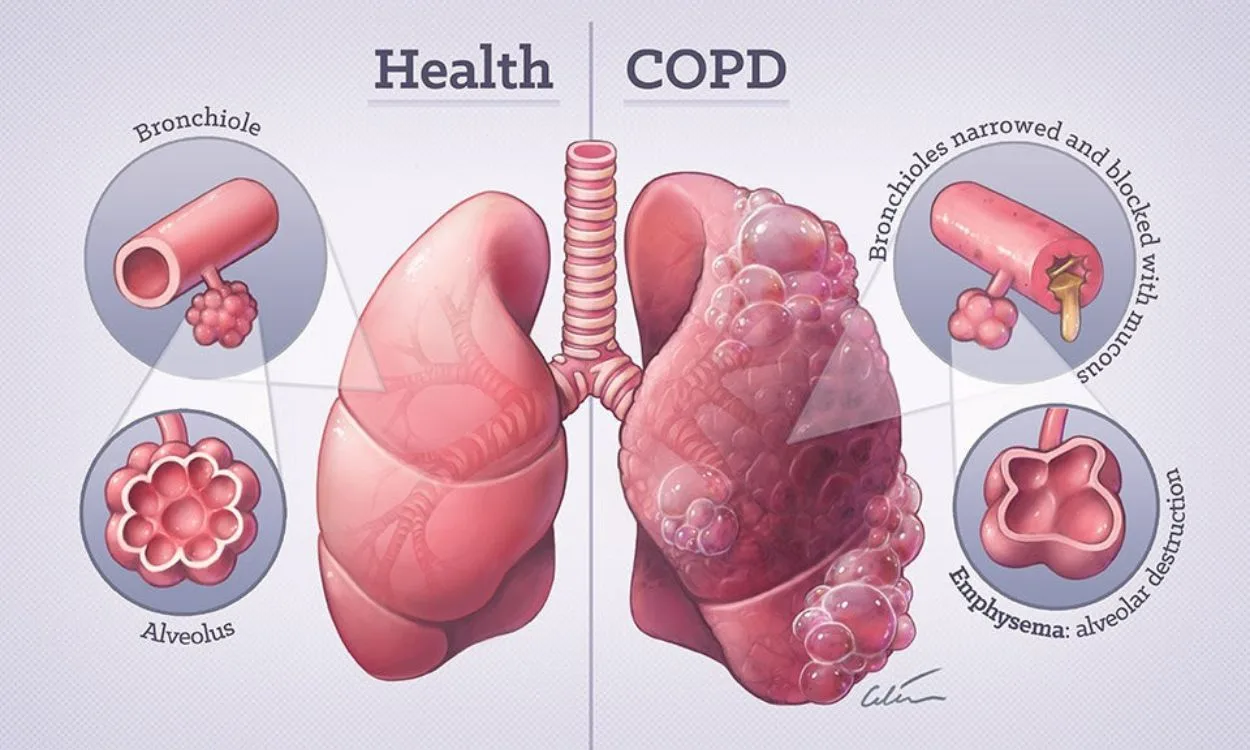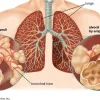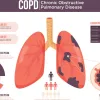What are the risk factors for developing COPD?
Chronic Obstructive Pulmonary Disease (COPD) is a progressive lung disease that causes breathing difficulties and airflow limitation. It is a major health concern in India, with a high prevalence among both men and women. Understanding the risk factors associated with COPD is crucial for prevention, early detection, and management of the disease. Here are the key risk factors for developing COPD:
1. Smoking:
- Cigarette smoking is the leading cause of COPD. The harmful chemicals in tobacco smoke cause inflammation and damage to the lungs over time.
- Both active smoking (smoking directly) and passive smoking (inhaling secondhand smoke) increase the risk of developing COPD.
- Quitting smoking is the most effective way to reduce the risk of COPD and slow down the progression of the disease.
2. Occupational Exposure:
- Exposure to certain workplace pollutants and chemicals can contribute to the development of COPD.
- Industries such as mining, construction, manufacturing, and agriculture expose workers to harmful substances like dust, fumes, chemicals, and gases that can damage the lungs.
- Occupational safety measures and wearing protective equipment are essential to reduce the risk of COPD in these settings.
3. Indoor Air Pollution:
- In India, the use of solid fuels for cooking and heating, such as biomass fuels (wood, crop residues, dung), is common in rural areas. The smoke emitted from these fuels contains harmful particles and gases.
- Prolonged exposure to indoor air pollution increases the risk of COPD, especially in individuals who spend a significant amount of time indoors, such as women and children.
- Promoting the use of clean and efficient cooking stoves and improving ventilation in households can help reduce the risk.
4. Genetic Factors:
- Alpha-1 Antitrypsin Deficiency (AATD) is a genetic condition that predisposes individuals to develop early-onset COPD.
- AATD is caused by a deficiency in a protein called alpha-1 antitrypsin, which protects the lungs from damage. When this protein is deficient, the lungs are more susceptible to injury and COPD.
- Genetic testing can identify individuals at risk for AATD, enabling early intervention and management.
5. Age and Gender:
- The risk of developing COPD increases with age. Most individuals diagnosed with COPD are over the age of 40.
- In India, women are more likely to be exposed to indoor air pollution due to traditional cooking practices, which can contribute to a higher prevalence of COPD among women.
- However, the overall prevalence of COPD is higher in men due to higher rates of smoking.
6. Respiratory Infections:
- Repeated respiratory infections, particularly in childhood, can damage the lungs and increase the risk of developing COPD later in life.
- Infections such as pneumonia and tuberculosis can cause inflammation and scarring, leading to long-term lung damage.
7. Socioeconomic Factors:
- Low socioeconomic status, inadequate access to healthcare, and poor nutrition can contribute to the development and progression of COPD.
- Limited access to quality healthcare facilities, diagnostic tests, and timely treatment may result in delayed diagnosis and inadequate management of the disease.
It’s important to note that while these risk factors increase the likelihood of developing COPD, not everyone exposed to them will develop the disease. Additionally, individuals without these risk factors can still develop COPD due to other factors such as genetic predisposition or respiratory infections.
If you think you may be at risk for COPD or are experiencing symptoms such as persistent cough, shortness of breath, wheezing, or frequent respiratory infections, it is crucial to consult a healthcare professional for proper evaluation and diagnosis.
Interested in taking control of your health? Download the Fitpaa app!
Are you ready to take charge of your health and improve your overall well-being? Look no further than the Fitpaa app, a comprehensive health and fitness solution designed to help you achieve your goals with guaranteed results.
The Fitpaa app combines cutting-edge AI-driven technology with a team of expert fitness coaches, nutritionists, and doctors to provide you with a personalized health and fitness plan. With 3 simple steps, you can start your journey towards optimal health:
- Take the Metabolism Assessment: Identify the root cause of your health condition by assessing your current metabolism. Our MNT (Medical Nutrition Therapy) specialist, using the Fitpaa Metabolism Monitoring Technology, will consider every aspect of your life to perform a thorough metabolism assessment.
- Get your Fitpaa Capsule: After your metabolism assessment, consult with our expert team to receive your personalized Fitpaa Capsule. This all-in-one plan incorporates medical therapy, exercise therapy, nutrition therapy, and cognitive behavior therapy to optimize your metabolism and help you achieve your health and fitness goals.
- Take Fitpaa Capsule daily: Follow your Fitpaa Capsule with the help of the Fitpaa mobile app. The app provides real-time guidance, habit-building techniques, and a virtual workout trainer to support you in your journey. Regular reviews from our team ensure you stay on track and make necessary adjustments along the way.
With Fitpaa, you get more than just a Fitpaa mobile app – you get a dedicated team committed to your success. Our goal-oriented services come with lifetime validity, ensuring you achieve your health and fitness goals with a 100% guarantee.
Don’t let COPD or any other health condition hold you back. Experience the joy of a fit and healthy life by downloading the Fitpaa app today. Your well-being is our mission, and we are here to support you every step of the way.









